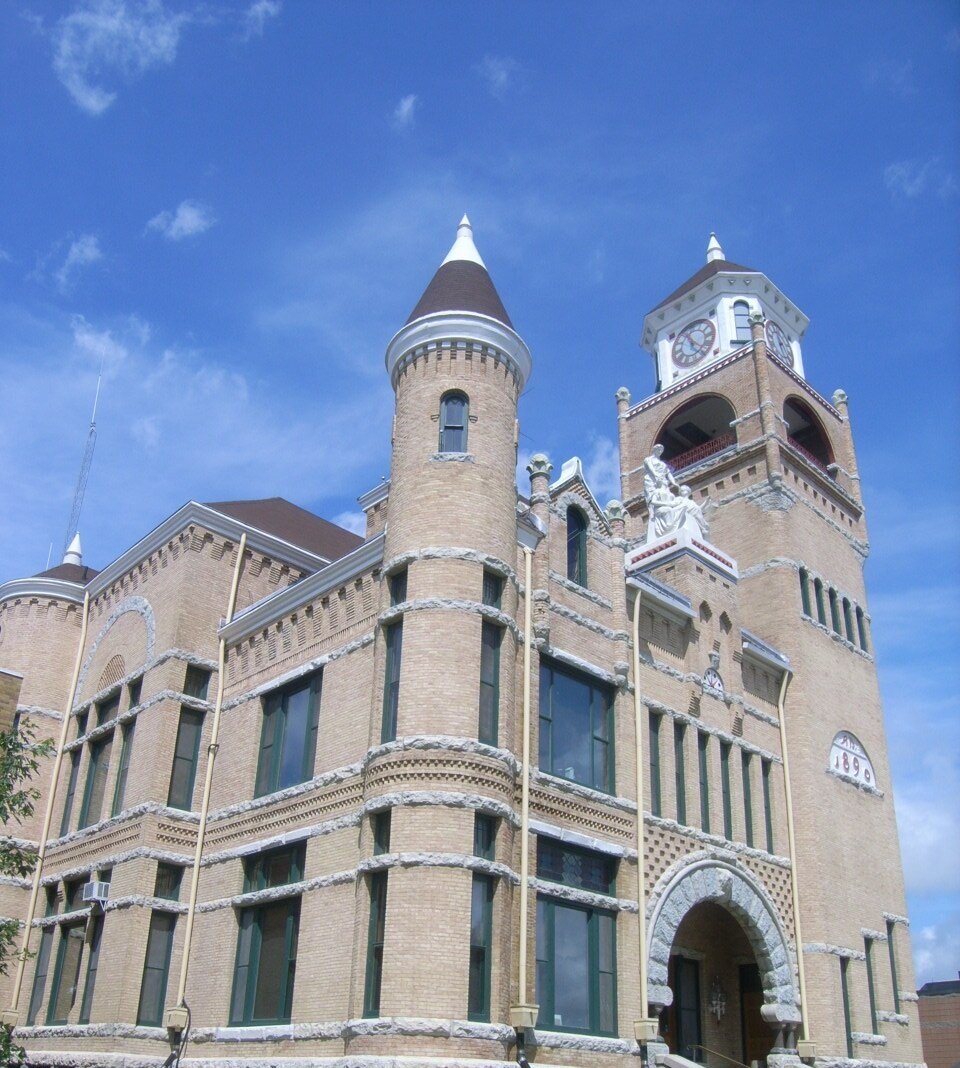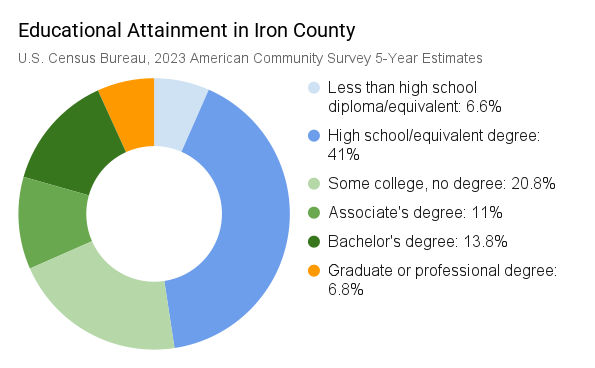
Iron County
Iron County pairs a rich, multifaceted history with a stunning natural environment, offering abundant recreational opportunities in a quieter, more laid-back setting than the neighboring Wisconsin Northwoods nearby. The Iron County Heritage Trail (ICHT) connects many historic sites, charming communities, and other points of interest along one route. The ICHT includes plenty of non-motorized spur trails.
As the only county in the Western U.P. that doesn’t border Lake Superior, Iron County’s water resources center on hundreds of inland lakes and blue-ribbon trout streams, attracting anglers and paddlers from across the Midwest. The George Young Recreation Complex features a first-class golf course and a beautiful indoor event and restaurant space.
Iron County is the closest county in the Western U.P. for travelers from eastern Wisconsin and the Chicago area—making it a perfect first stop and warm welcome to the region.
People
-
Population: 11,709
Population percent change from 2020 – 2024: 0.8%
Median household income: $53,614
Per capita income: $33,488
Asset Limited, Income Constrained, Employed (ALICE) households earn more than the Federal Poverty Level, but not enough to afford the basics where they live.
Of the 5,354 households in Iron County in 2023…
18% earned below the Federal Poverty Level (FPL).
29% were ALICE, households that earned above the FPL, but not enough to afford basic needs or save for the future.
Together, 47% of households in Iron County were below the ALICE Threshold (poverty + ALICE divided by total households).
Economy
-
Employed persons (U.S. Bureau of Labor Statistics, April 2025): 4,040
Unemployment rate (U.S. Bureau of Labor Statistics, April 2025): 9.5%
Top five industries by number of workers 16 & over:
Education, healthcare, and social assistance: 19.9%
Manufacturing: 14.5%
Retail trade: 11.1%
Arts, entertainment, recreation, accommodation, food services: 10.4%
Professional, scientific, management, administrative, and waste management services: 8.7%
Learn about Iron County’s Economic Development Capacity Index (EDCI) here
Housing
-
Total housing units (2024): 9,422
Households: 5,354
Average persons per household: 2.11
Housing age:
26% built in 1939 or earlier
Median year of structures built: 1962
Median owner-occupied house value: $101,500
Median gross rent 2019-2023: $510
Homeownership rate: 85.3%
Health
-
Persons without health insurance: 7.7%
Persons living with a disability under age 65: 14.8%
Persons unable to access healthcare due to cost (Western UP District Health Department): 21.8%
Persons receiving 5+ daily servings of fruits and vegetables (Western UP District Health Department): 8%
Food insecurity rate in Iron County (Feeding America): 18.6%
Population living 10 or more miles away from the nearest grocery store (Western UP Food Systems Collaborative, 2022): 40.3%
Access the WUPDHD Community Health Needs Assessment for the county here
Access the WUPFSC Community Food Survey Results for the county here
Education
-
Total K-12 enrollment in 2024-2025: 1,605
Children ages 5–17 enrolled in school: 97.9%
Households with a computer: 87.5%
Households with a broadband Internet subscription: 81.2%
Educational institutions (NCES):
Elementary schools: 1
6-12 schools: 1
PK-12 schools: 1
Bay College - Iron Mountain Campus
Career and Technical Education Center (Dickinson-Iron ISD)
Statistical data are from 2019-2023 American Community Survey five-year estimates. Other sources are in italics.




